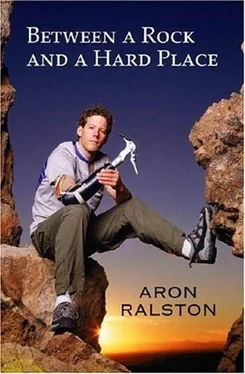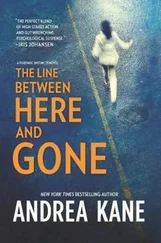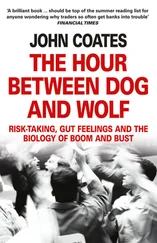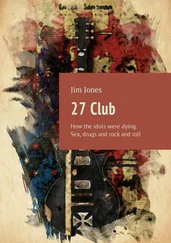I took a weeklong rafting trip with my father in 1993, and enjoyed it so much that two years later, I followed up on my dad’s contacts with the rafting companies near Buena Vista, Colorado. Within a week of returning from college after my sophomore year, I got a summer job as a raft guide. In late May 1995, I moved into the motel-cum-boathouse that my employer, Bill Block, used as the base of operations for his company, Independent Whitewater. We were one of the smallest companies on the river, running two or three boats a day compared with some of the larger outfitters, who might have ten times that number. But with three guides, that meant that Pete, my new friend, colleague, and bunkhouse mate, and I worked almost every day. I could have taken off more than the seven days I allowed myself that summer, but this so-called job was so much fun that I rarely felt like doing anything else. Due to a snowpack that reached 400 percent of average levels in the surrounding ranges, the summer of 1995 was the biggest water season in the history of guided boating on the river. Rapids that were normally Class III to IV+ morphed into Class V, the highest runnable grade-and even unnavigable giants-while smaller sets of wave and technical obstacles like the Graveyard and Raft-Ripper disappeared completely. Three people died that season on the stretch of river that we guided-two private boaters and one with another rafting company-and we saw a peak of over 7,200 cubic feet per second in the canyon, nearly four times the average peak and twice the last big-water-year peak. With water like that, I felt like I was missing out when I didn’t work a trip.
Even after most of us had taken two half-day trips down through Brown’s Canyon, with available equipment and skilled partners abounding in the evenings, guides from other companies and I would load up a van with our hard-shell and inflatable kayaks and drive up the valley to run another excellent section of rapids made even better by the big water. On days when our companies’ owners deemed the river too gnarly to run with clients, we would get together an all-guides boat to tackle the most aggressive lines in the canyon, or even do midnight runs under the bright glare of a full moon. The rafting community in the upper Arkansas valley was a culture that rewarded cocksure risk-taking, even when it bordered on the absurd. One afternoon in July, I went with our third guide, Steve, to the hardware store in Buena Vista and bought two inflatable kid-sized pool toys. These kiddie rafts were like three-foot-long rowboats, with twelve-inch-high flotation tubes around the perimeter of the thin, flexible plastic floor. They cost ten dollars each, and river-worthy they were not. We’d been joking about running Brown’s Canyon with them ever since Pete had alerted us to their existence, but instead, we drove over to the put-in south of town and dropped them in the ever mighty Arkansas above an eight-mile section of Class I-II rapids, the smallest on the river but sufficiently large compared to our meager craft. Each armed with a personal flotation jacket, a cutoff-milk-jug bailing bucket, and kayak paddle, Steve and I proceeded downstream on our “do not try this at home” mission and successfully ran one of the biggest rivers in the state with our hilariously inadequate dinghies.
In late August, I took three of my best friends, all neophytes on the river, down through Brown’s Canyon on a single-raft midnight run. This was much more intense than when I’d gone with other guides on a multiple-boat excursion. The biggest twist was that I’d planned it for the night of the new moon, instead of the full moon. In such darkness, with river, shore, canyon walls and sky all blended into the same inky blackout, navigation was all-important; an unexpected bump could send one of my friends into the river, where he or she would disappear completely in the dark.
In still-water sections, the stars reflected at us from the mirrored surface of the river. Where the stars didn’t reflect, that meant there was a ripple, rock, or rapid. At times there was just enough light from above to make out the white-tipped wave crests, but once we entered the canyon, the high walls diminished the ambient light even more, and it became a total memory game for the remaining nine miles to the takeout. Just before the first rapid, Ruby’s Riffle, a short Class II, I scraped the front left corner of the raft on a large rock. But after that, through the next thirteen rapids, including some large Class III and technical Class IV sections, we had a completely clean run and an awe-inspiringly surreal experience. When the river was calm, it felt uncomfortable to break the silence. Rather than speak, we looked up. More stars than my friends and I had ever seen floated so vibrantly in front of our eyes that I perceived for the first time that space wasn’t a flat blanket but a three-dimensional womb. I thought I could tell that some stars were behind others just by looking at them.
After graduating at the head of my class and receiving my B.S. in mechanical engineering-with a double major in French and a minor in piano performance-in May 1997, I took a job as a mechanical engineer for Intel Corporation, in Ocotillo, Arizona, a far-flung suburb at the southeastern edge of the mega-sprawl of Phoenix. I would eventually transfer first to Tacoma, Washington, in March 1999, and then to Albuquerque, New Mexico, in September of that same year. But it was in 1997, right after graduation, when my long-dormant passions for the wilderness environments of the western U.S. began to blossom. Before I moved to Arizona, I wanted to reward myself for my successes in school and for having found what I anticipated would be a good job, so I planned not just a vacation but a super-vacation. It was to be the Road Trip to End All Road Trips. I would start driving my 1984 Honda CRX north, first to the Grand Teton, Yellowstone, and Glacier national parks, then on into Canada, to tour the Banff National Park and Icefields Parkway, over to Vancouver and down into the Cascades, Olympic, and Rainier national parks, finishing the circuit with Crater Lake, Yosemite, and Zion national parks. Thirty days, six thousand miles, ten national parks.
As it turned out, I didn’t get very far. Since it was only late May, the snow levels were still high, which confined me to lower-elevation backpacking trips at first. My early-season venture into Phelps Lake in the Tetons rewarded me with a top-rate campsite beside the lake, where at dusk the first night, a cow moose trotted her silhouette in front of the sunset. I saw a pair of bald eagles soaring above a waterfall the next morning, then spied a grizzly bear in the forest near the road the day after that. I drove around and took photographs of the Tetons reflected in the broken windows of abandoned farmhouses in Antelope Flats. That same afternoon, I planned my next excursion, a two-night trip to Bradley Lake, where I intended to place a base camp for an attempt at climbing the Middle Teton, the easiest technically of the major peaks in the park. When I asked the backcountry ranger at the permits station how I could climb one of the Tetons, his disconcerted look foreshadowed the adventure I would have. It was a look that said, “If you have to ask, it’s against my better judgment to tell you.” He showed me how to get to Bradley Lake on the map under the Plexiglas countertop and explained that the trails were under several feet of snow, concluding with “If you don’t have snowshoes, you’ll be post-holing up to your waist.” I didn’t know what post-holing was, but I filled out the permit and kept quiet.
In the early afternoon, I set off hiking with my pack loaded for a three-day solo trip-my first overnight trip alone. I had my camping gear and clothing in my main pack, and my food and cooking supplies in a small purple school pack that I wore on my chest. About a mile in from the Taggert Lake Trailhead, the snowpack was already deep enough that I wallowed with every footstep. Without other bootprints around, I was obviously the first hiker to access this trail in a while, perhaps all winter. I struggled under my heavy pack. Deeper and deeper the snow became as I gained in elevation and moved up onto the rounded moraines left behind from the ice age glaciers. After an hour of slow-moving progress, I was approaching the forest at the crest of the moraine and a significant snowdrift. As my boots sank down several feet with every stride, the jagged ice crystals of the middle snowpack increasingly abraded my shins. In another fifteen minutes, with snow packed in my boots and up my pants legs, I lost sensation below my knees, and the cold wet abuse became less bothersome. After dropping into the snow several dozen times, I changed strategy and crawled up the last twenty feet to the spine of the snowdrift and plopped myself astride the compacted lip of snow. Breathing heavily from the exhausting effort, I looked back over my left shoulder at the series of deep holes I had left and understood then what post-holing meant.
Читать дальше












